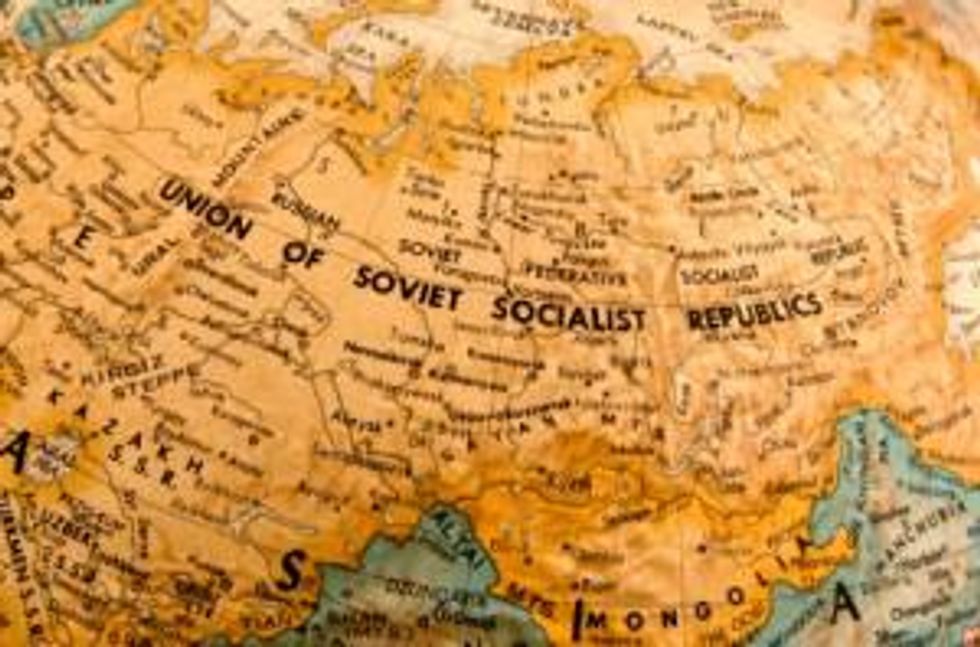Gold in the “Stans”: Challenges and Opportunities
Nations that were formerly part of the USSR are largely overlooked, but not by everyone.
Commercial gold mining has always been important in former Soviet Union nations, states an article published by the Alchemist, a quarterly journal from the London Bullion Market Association. Although 1997 to 1998 marked a low point for gold production in a large number of these nations, since then, many �— including those clustered in Central Asia — have rebuilt and are improving and expanding their gold industries.
This region is home to the Tien Shan gold belt, which Central Asian Minerals and Resources (CAMAR) describes as one of the richest in the world. It spans over 2,500 kilometers, running through parts of Uzbekistan, Tajikistan, Kyrgyzstan, Kazakhstan and China, and contains numerous large gold deposits, including Muruntau, Kumtor and Konimansuri Kalon in Tajikistan, which reportedly contains over 50 million ounces.
Kyrgyzstan
Kyrgyzstan provides an excellent example of the economic benefits delivered by gold mining. It hosts the Kumtor gold deposit, currently owned by Centerra Gold (TSX:CG,OTC Pink:CAGDF). The company claims the titles of the country’s largest private-sector employer and the largest source of foreign investment.
The Kumtor mine, which produced 8.6 million ounces from 1997 to 2012, is one of the largest gold mines in Central Asia. Centerra’s 100-percent interest in the project is notable not only because of Kumtor’s size, but also because it is in the hands of western company.
However, there is some uncertainty about the future of that arrangement. The government has not only expressed concerns over the company’s tax payments, but also alleges that it has caused significant environmental damage. Five environmental claims issued in December for $150 million have now been followed by another environmental claim for $315 million. The Kyrgyz parliament has set a three-month deadline for the government to revise its 2009 deal with Centerra or terminate the arrangement unilaterally. Throwing more cold water on the situation, the mine was hit by a strike earlier this month.
Kazakhstan
Companies also have their sights set on neighboring Kazakhstan’s gold.
Central Asia Resources (ASX:CVR) states on its website that Kazakhstan is the only former Soviet Union nation to have fully privatized almost all gold companies and properties. The company is focused on gold and currently has five prospects. It recovered 181 ounces of gold from Dalabai, one of the prospects, last year.
Hambledon Mining (LSE:HMB,OTC Pink:HBMGF) began mining in Kazakhstan in 2008 and expanded from open-pit to underground mining. The company hopes to acquire Akmola Gold, which will bring into the group two deposits with combined resources of 440,000 ounces of gold.
Southern Cross Exploration (ASX:SXX) is reportedly prepared to spend $1.5 million to become part of a new company. Its motive in doing so is to get a 20-percent interest in three properties in Kazakhstan.
Turquoise Hill Resources (TSX:TRQ,NYSE:TRQ) owns a 50-percent interest in Altynalmas Gold, the owner of the Kyzyl gold project. Based on feasibility study results announced last year, its mineral reserve estimate is 5.76 million ounces of gold. Earlier this month, Turquoise Hill reached an agreement to sell its stake to Sumeru Gold for $300 million.
Uzbekistan
Uzbekistan produced about 90 metric tons (MT) of gold in 2011, making it the the tenth-largest gold producer in 2011. The nation’s reserves are 1,700 MT, according to the USGS.
Uzbekistan is also endowed with Muruntau, the largest open-pit gold mine in the world. The Alchemist articles notes that about 50 MT of gold are produced from this site, which is operated by Navoi Mining & Metallurgy Combinat, a state-owned company.
Uzbekistan plans to develop about 30 gold deposits by 2025, according to Trend. Almalyk Mining and Metallurgical Combine has already reconstructed Kyzyl Olma and Kochbulak fields, which are now primary gold-producing sites. The state-owned copper producer is currently building another gold mine, with plans to spend an estimated $74 million on the project.
While Uzbekistan’s gold mining industry seems to be moving in a positive direction, there are some stories that those who considering investing in the country should consider.
One involves Newmont Mining (NYSE:NEM), which quickly zeroed in on the country’s gold sector after it gained independence. Newmont signed a joint venture with the government and mined there until 2006, when Uzbekistan decided to rid itself of the partnership. The government claimed that Newmont had not paid taxes, according to media reports at the time. After the courts agreed, Newmont’s metal production was seized.
Uzbekistan’s strong-arm tactics are also highlighted in its dispute with Oxus Gold (LSE:OXS). The company held a 50-percent stake in Amantaytau Goldfields; it was partnered with two Uzbek companies. After the the government initiated an audit of Amantaytau, Oxus claimed it was an attempt to force liquidation below market value. This matter has required international arbitration.
Tajikistan
Tajikistan is also a Central Asian gold producer and CAMAR is a company that is focused on this nation’s resources. The company has reported production of about 12,000 ounces of gold equivalent per year. The benefits that CAMAR outlines for operating in Tajikistan include exemption of foreign income tax for up to five years, liberalized interests rates and controlled exchange rate.
Zinjin Mining has also invested in Tajikistan. The company holds a 75-percent interest in the Zeravshan joint venture, with the government holding the remaining 25 percent. Zeravshan holds four mining licenses in Tajikistan. The land package reportedly contains 5.5 million ounces of gold.
A $189-million expansion project is currently underway at Zeravshan, but Zinjin has noted that completion is near. When the expansion is completed, the project’s capacity is expected to be about 10,000 ounces per day with 160,000 ounces of gold production each year.
Securities Disclosure: I, Michelle Smith, do not hold equity interests in any of the companies mentioned in this article.
Related reading:






